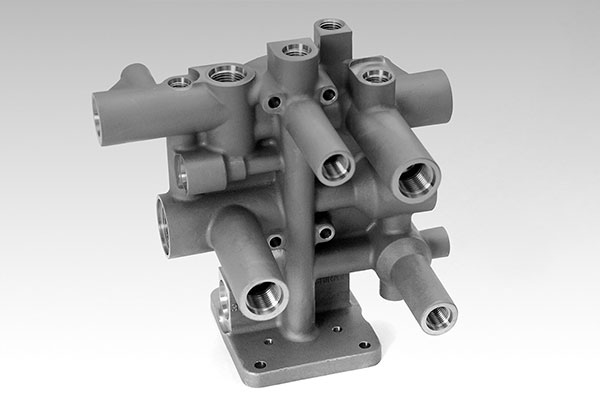Precision investment casting of K403 alloy shell components presents significant challenges due to complex geometries, drastic wall thickness variations, and stringent quality requirements. This study systematically addresses critical defects including porosity, dimensional deviations, and cold shuts through optimized wax pattern production, shell-building strategies, and controlled melting/pouring parameters.
1. Wax Pattern Optimization
The dimensional accuracy of wax patterns fundamentally determines casting quality. Key process parameters were established through iterative testing:
| Parameter | Optimal Range |
|---|---|
| Wax Temperature | 55-63°C |
| Mold Temperature | 25-35°C |
| Injection Pressure | 15-25 bar |
| Holding Time | 15-20 s |
The shrinkage compensation model for wax patterns follows:
$$ \delta = \frac{L_{\text{mold}} – L_{\text{wax}}}{L_{\text{mold}}} \times 100\% $$
Where δ represents linear shrinkage rate, typically maintained at 0.6-0.8% through parameter optimization. Integrated mold design eliminated dimensional deviations caused by multi-part assembly, reducing positional errors from 2.2 mm to <0.1 mm.

2. Advanced Shell Building Technology
A hybrid shell system combining colloidal silica and ethyl silicate binders achieves optimal strength and permeability:
| Layer | Slurry System | Stucco | Drying |
|---|---|---|---|
| 1-2 | Colloidal silica + zircon flour | White alumina | 12h RH control |
| 3-8 | Ethyl silicate + chamotte | Chamotte sand | Ammonia hardening |
The thermal conductivity enhancement for critical sections follows Fourier’s Law:
$$ q = -k \frac{dT}{dx} $$
Where k represents effective thermal conductivity, increased by 40% through localized shell thinning and wax insulation techniques. This modification reduced hot spot porosity by 78% in experimental trials.
3. Precision Melting and Pouring Control
Key parameters for K403 alloy processing:
| Parameter | Value |
|---|---|
| Pouring Temperature | 1,430±10°C |
| Shell Preheat | 950-1,000°C |
| Vacuum Level | <5×10⁻² Pa |
| Cooling Rate | 25-30°C/min |
The critical filling velocity equation ensures complete mold filling:
$$ v_c = \frac{\Delta P \cdot t_f}{\mu \cdot L} $$
Where ΔP = pressure differential, t_f = fluidity time, μ = dynamic viscosity, and L = flow length. Maintaining 2-3s pouring time per mold achieved 99.2% complete filling rate in production trials.
4. Quality Enhancement Mechanisms
The precision investment casting process demonstrates significant improvements:
| Defect Type | Reduction Rate | Control Method |
|---|---|---|
| Porosity | 82% | Directional solidification control |
| Dimensional Deviation | 91% | Integrated mold design |
| Cold Shut | 95% | Thermal gradient optimization |
The final process yielded 87.5% qualification rate (35/40 castings) meeting aerospace standards, confirming the effectiveness of precision investment casting parameter optimization for complex K403 alloy components.
